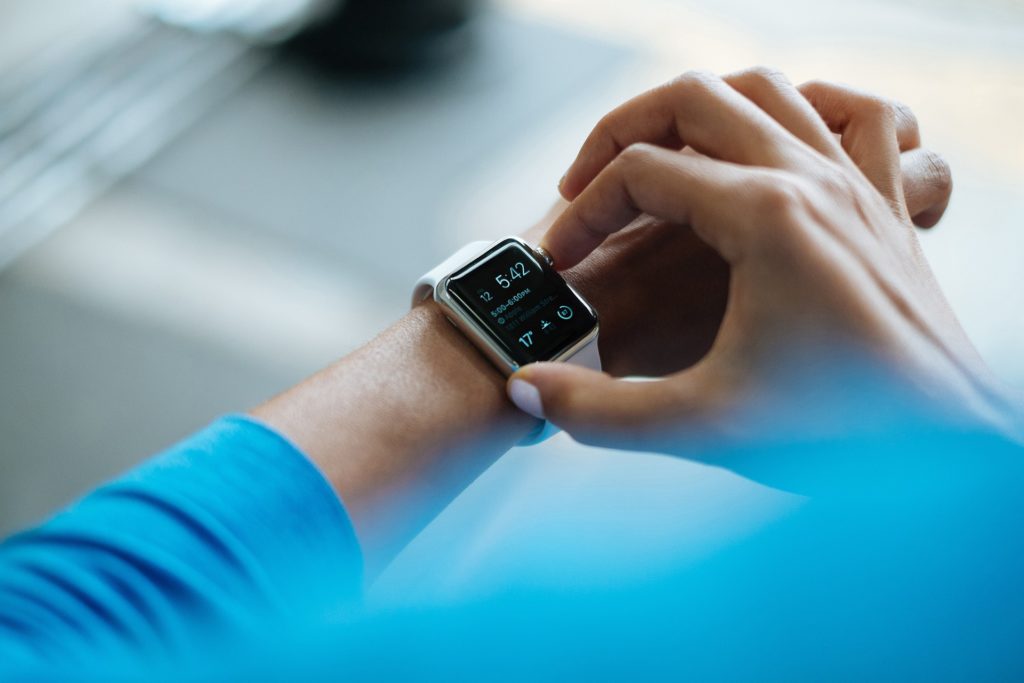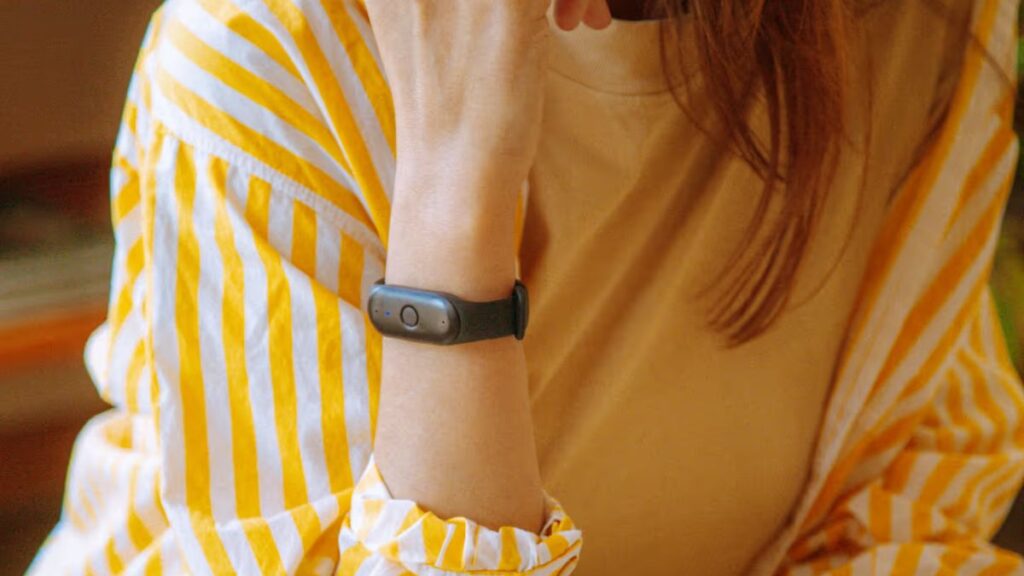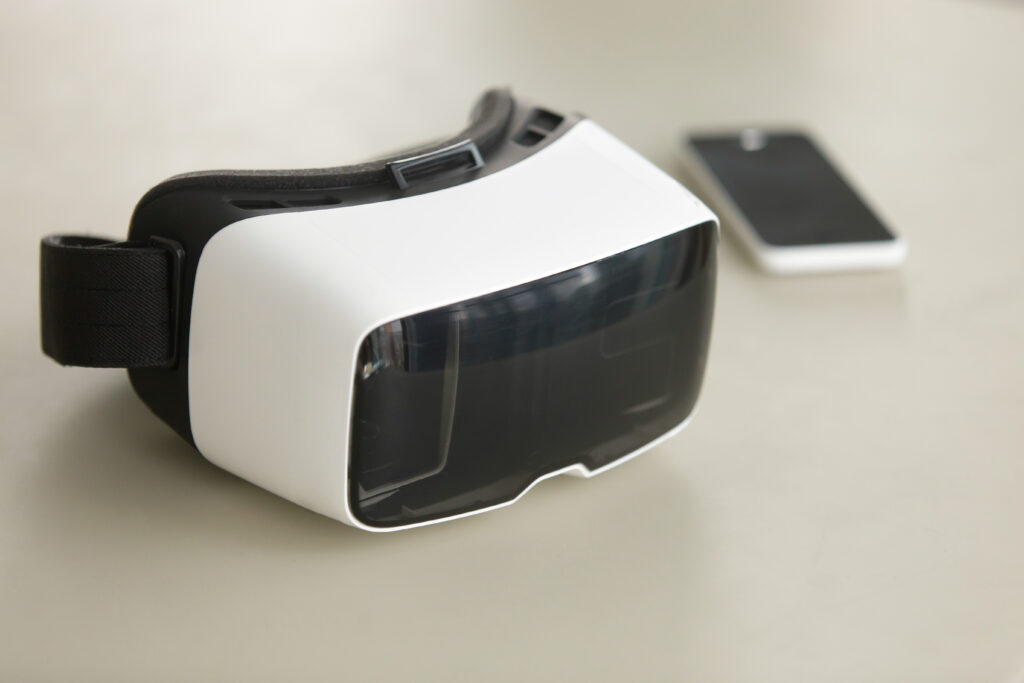Are you looking for ways of bringing your workforce together—even if they might not physically be in the same room? Perhaps you have a warehouse that relies on clunky handheld equipment to guide your employees around the building?
The world of work is changing: working from home has become more popular, and the need to coordinate and communicate has never been more vital.
Wearable technologies in the workplace might sound like something from a dystopian sci-fi – but teamwork and collaboration in the workplace is a priority for modern businesses, and wearables are an obvious conduit to achieving workplace harmony.
Intrigued?
Here’s our look into the future of wearable technology in the workplace.
It’s an exciting world out there.
The smartwatch
Wearable technologies have already been embraced by the public—most commonly, in the form of smartwatches.
A smartwatch is a powerful piece of kit. But the full potential of the technology in the workplace is yet to manifest.
Smartwatches, of course, are capable of way more than just telling the time. They can also:
- Monitor your heart rate
- Enable contactless payments
- Provide GPS location
- Make phone calls
- Pick up emails and texts
There are obvious benefits for businesses who want to stay in continuous contact with their employees, while the future of clocking in and out is just a contactless tap away.
Interactive displays in meeting rooms come to life where smartwatches are used to gather votes in polls; audio is beamed to remote locations using VOIP capabilities; and staff health can be monitored to satisfy HR that the workforce is being cared for.
The future will see video conferencing, instant messaging, central calendar access, and live updating all made possible through smartwatch technologies.
Smart clothing
The Butterfly Dress by Intel has a proximity sensor that responds to external stimuli, such as other people approaching and recognition of other nearby wearables.
And while the application of a high-concept catwalk piece might not immediately seem to relate to the board-room, the practical employment of proximity sensors in clothing could be a real boon to businesses where the location of employees is paramount.
Smart clothing has a plethora of future medical applications, including health monitoring and even the potential for enabling disabled limbs, making the workplace more inclusive.
Smart sneakers
Easyjet may be well-known as pioneers of the budget airline, but they’ve been exploring ways that they can add value to the tourist experience, and smart sneakers are their latest innovation.
Using vibration technology to navigate the wearer around the streets, Easyjet’s Sneakair shoes could be the next big thing in navigation—essential for businesses such as Amazon who use warehouses to store and locate hundreds of product lines to guide workers more efficiently to find what they’re looking for.
Virtual reality headsets
VR has come a long way from the blocky, jerky experiments of the 1980s. In fact, iterations of VR date back as far as the 1950s.
The VR tech that’s available to us now is generally accessed through the smartphone in your pocket—adapted to be worn over the eyes.
VR technology in the workplace may sound a long way off, but it’s all about pairing possibility with the needs of a business.
The world of training opens up as soon as you offer interactive, experiential learning—made possible by wearables. And group meetings in virtual spaces are set to become the norm.
In the future, workplaces that embrace VR will be able to accommodate more flexibility for employees—making virtual meeting spaces, customer-facing departments, and client liaison more possible without the need for costly, physical locations and/or travel expenses.
Augmented Reality
Augmented Reality facilitates integration between the digital world and the real world; overlaying digital—often interactive—imagery and information into real-world settings.
AR technology in the workplace has obvious practical uses, especially in the context of warehouse storage facilities and customer service departments.
AR is available now through smartphones but is generally considered to be more of a gimmick than a serious prospect for business.
Watch this space, however. AR wearables, such as Google Glass, aren’t widely available yet; and wherever they are, the costs are inhibitive. But as need supersedes novelty, the wider accessibility and affordability will facilitate the broader adoption of wearable AR in the workplace.
The future
Although the future is, effectively, with us right now, the broader applications for wearable technologies are yet to be fully realized.
It’s got to be said: the perceived novelty value of the technology has largely wrong-footed our recognition of the potential for wearables in the workplace.
However, the locational and navigable abilities of existing wearable tech represent the most valuable possibilities for the workplace; especially for businesses that rely on the coordination of large groups of people.
As wearables become commonplace, the expectation to wear them as part of our job role is sure to follow.
Innovations to come include nano-wearables that are invisible to the naked eye, embedded into lightweight clothing that can recognize health indicators such as stress-reactions; providing businesses with a more intuitive way to get the most from their workforce, by making the workplace a more conducive place to prosper.
- The Future of Wearable Technology in the Workplace - November 11, 2018




Comments are closed.